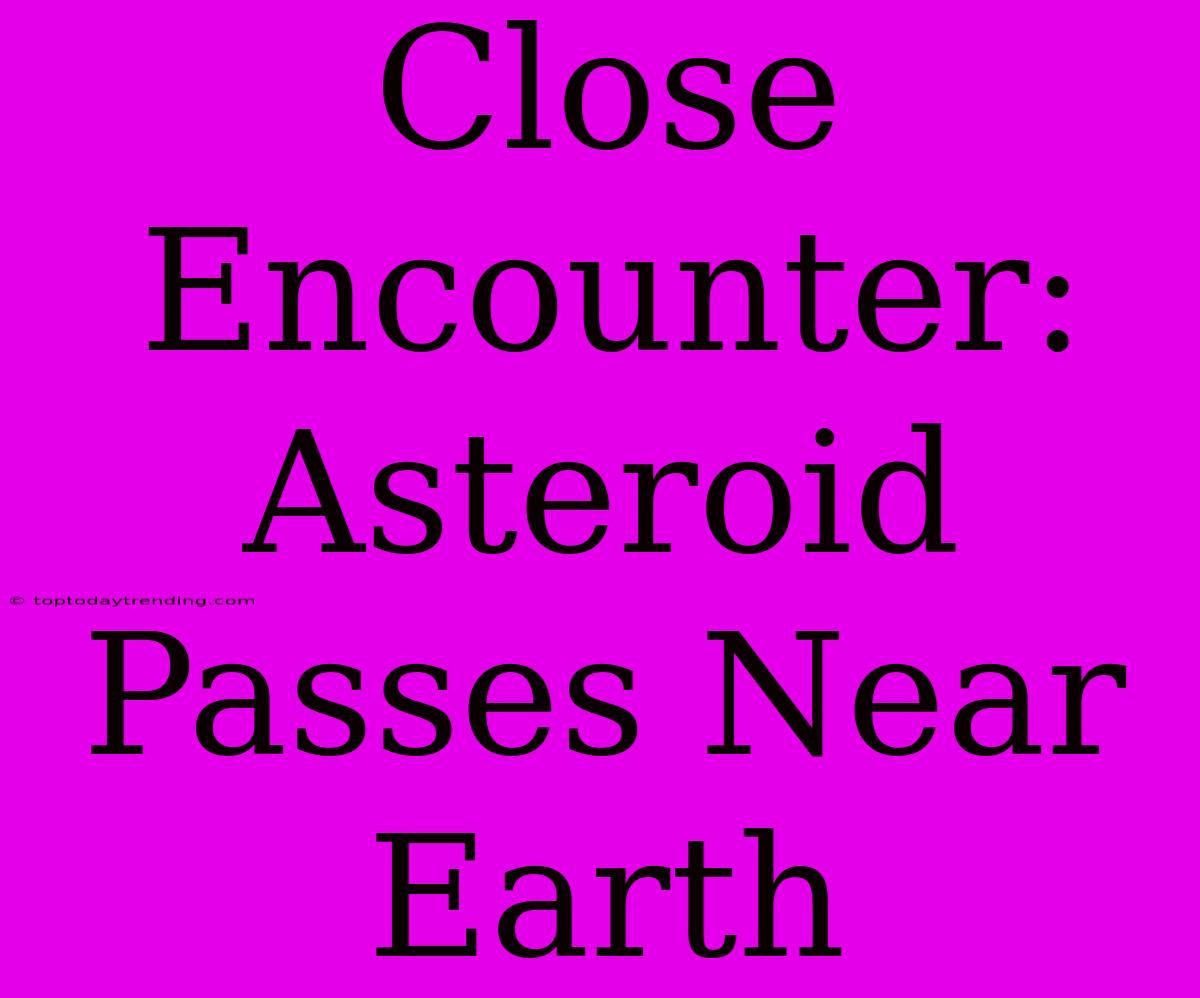Close Encounter: Asteroid Passes Near Earth
The vast expanse of space is a constant source of wonder and, at times, a touch of anxiety. Every so often, our celestial neighborhood becomes a little more interesting as asteroids make a close approach to Earth. These events, though often dubbed "near misses," serve as a reminder of the dynamic nature of our solar system and the potential threats it presents.
What are Asteroids?
Asteroids are rocky, irregularly shaped bodies that orbit the sun. They are remnants of the early solar system, left over from the formation of the planets. The vast majority of asteroids reside in the asteroid belt, a region between Mars and Jupiter. However, some asteroids have orbits that bring them closer to Earth.
Why Are Close Encounters Significant?
While most asteroids pose no immediate threat to Earth, the occasional close encounter serves as a wake-up call. These events provide valuable data to astronomers and space agencies, helping them:
- Understand asteroid trajectories: By tracking the path of these asteroids, scientists can refine models for predicting their future movements.
- Evaluate potential hazards: Close encounters highlight the potential for future impacts. This information is vital for developing early warning systems and potential mitigation strategies.
- Study the composition of asteroids: Close approaches allow scientists to gather data about the asteroid's size, shape, and composition, helping them piece together the history of the solar system.
The Recent Close Encounter
In recent months, an asteroid named (7482) 1994 PC1 made a close approach to Earth. This asteroid, roughly a kilometer in diameter, zipped past our planet on January 18, 2022, at a safe distance of around 1.2 million miles (1.9 million kilometers). Though considered "near" in astronomical terms, this distance was still far beyond the orbit of the moon.
This event, while not a cause for alarm, provided a valuable opportunity for scientists to gather data and further refine their understanding of asteroid behavior.
What Happens if an Asteroid Hits Earth?
The consequences of an asteroid impact depend on its size and speed.
- Small asteroids (less than 50 meters in diameter) are likely to burn up in the atmosphere, creating spectacular meteor showers.
- Larger asteroids (hundreds of meters or more) can cause significant damage, leading to widespread destruction and tsunamis if they impact water.
Mitigation Strategies
While the likelihood of a major asteroid impact is low, space agencies are actively working on mitigation strategies:
- Early detection: Telescopes and space-based sensors are constantly scanning the sky, looking for potential threats.
- Deflection techniques: Several methods are being studied to nudge asteroids away from Earth, including kinetic impactors, gravity tractors, and nuclear detonation.
Conclusion
The recent close encounter with (7482) 1994 PC1 is a reminder of the constant movement and dynamism of our solar system. While the threat from asteroids is real, it's also manageable with continued research and vigilance. By understanding these celestial bodies and developing effective mitigation strategies, we can safeguard our planet from potential harm.
As we gaze into the vast expanse of space, let us be both awed by its beauty and mindful of the challenges it may hold.

